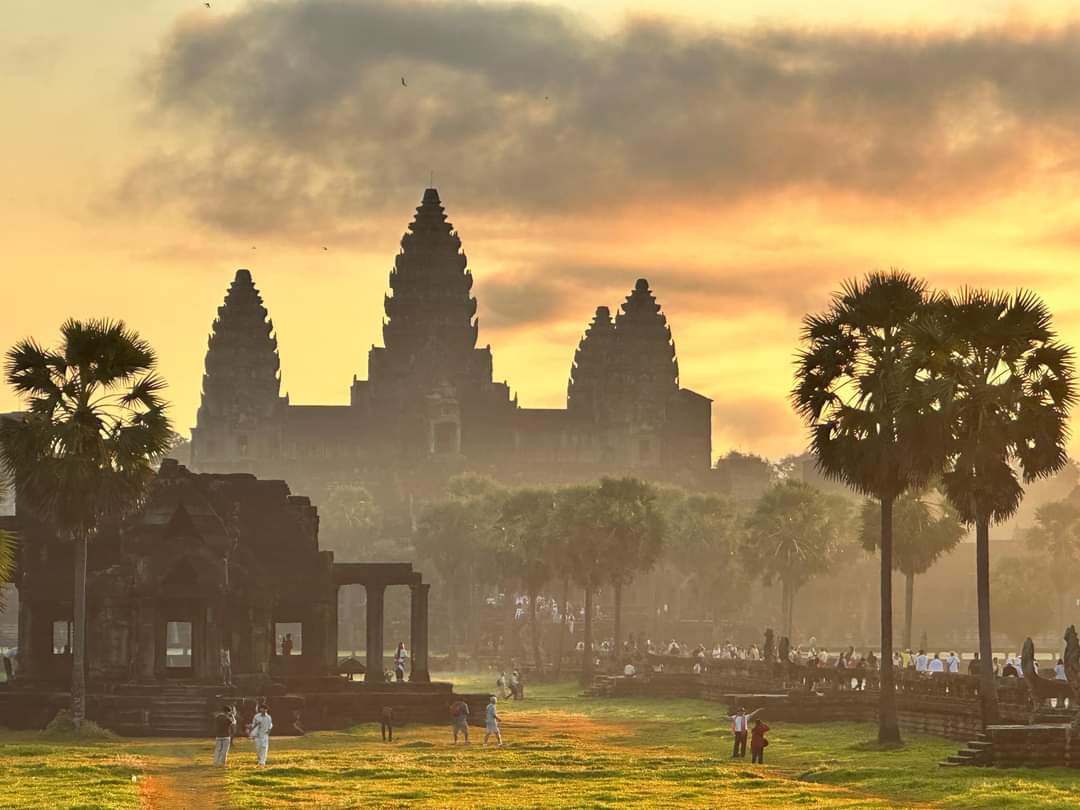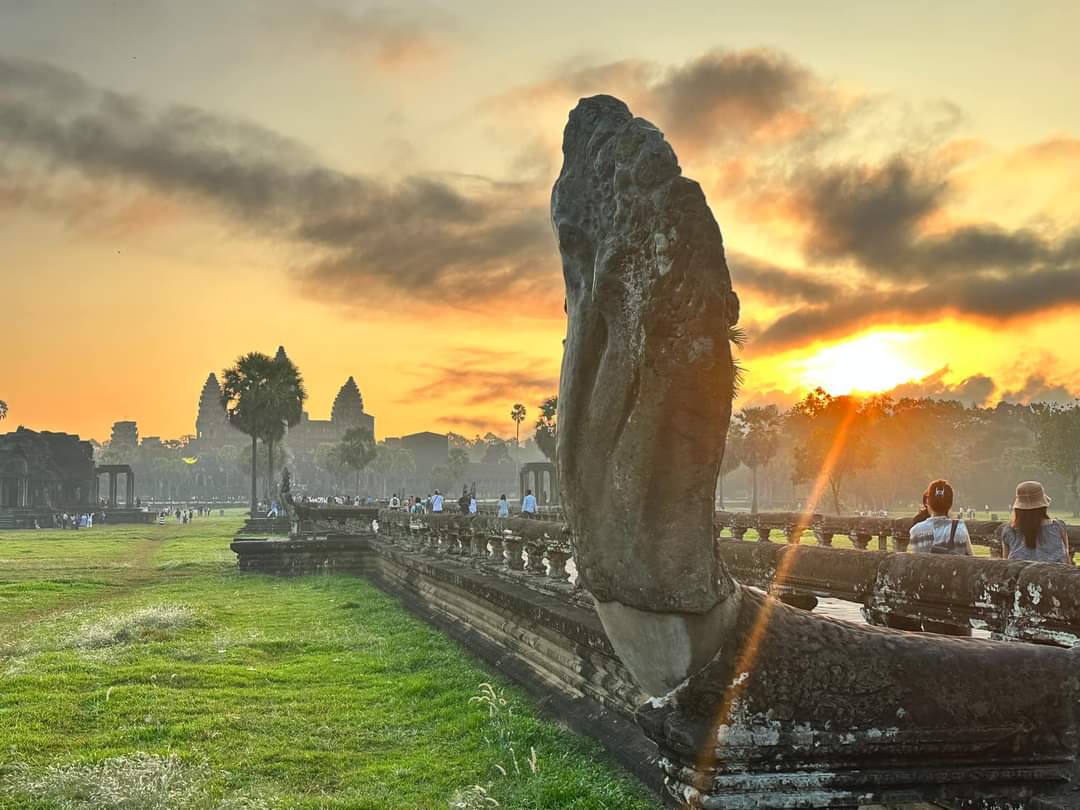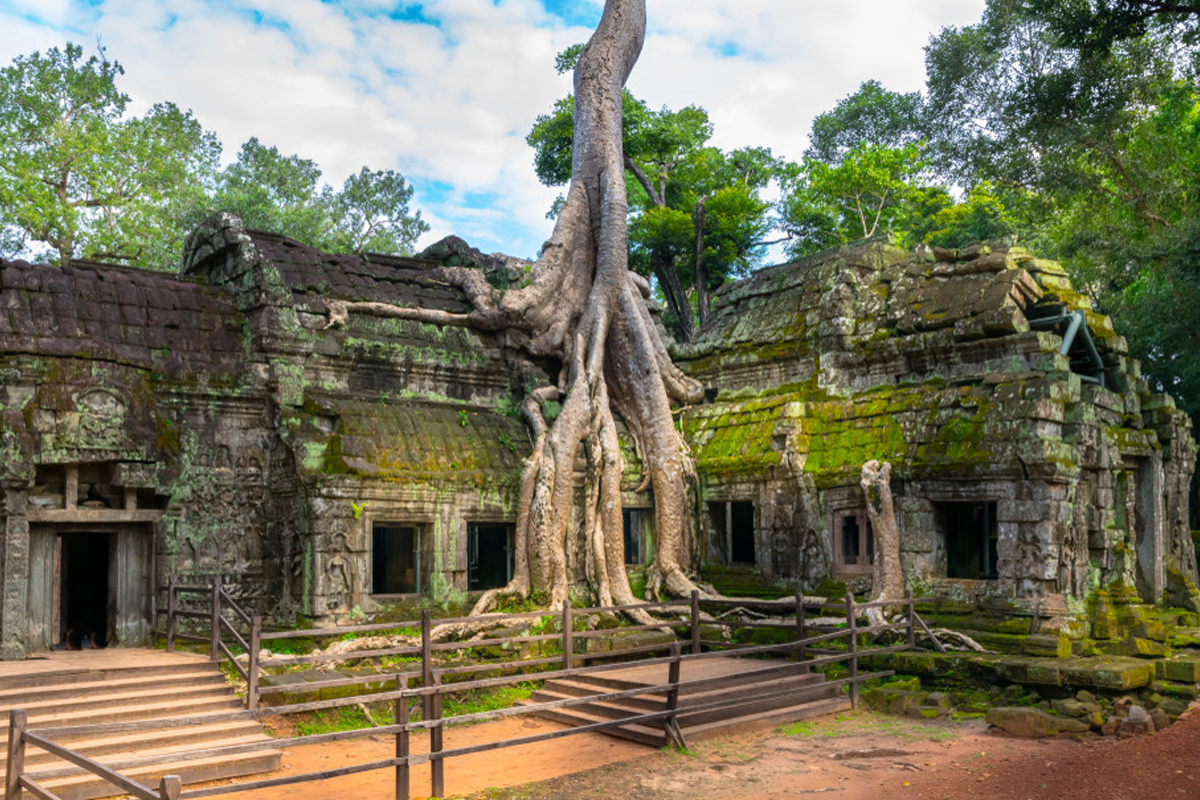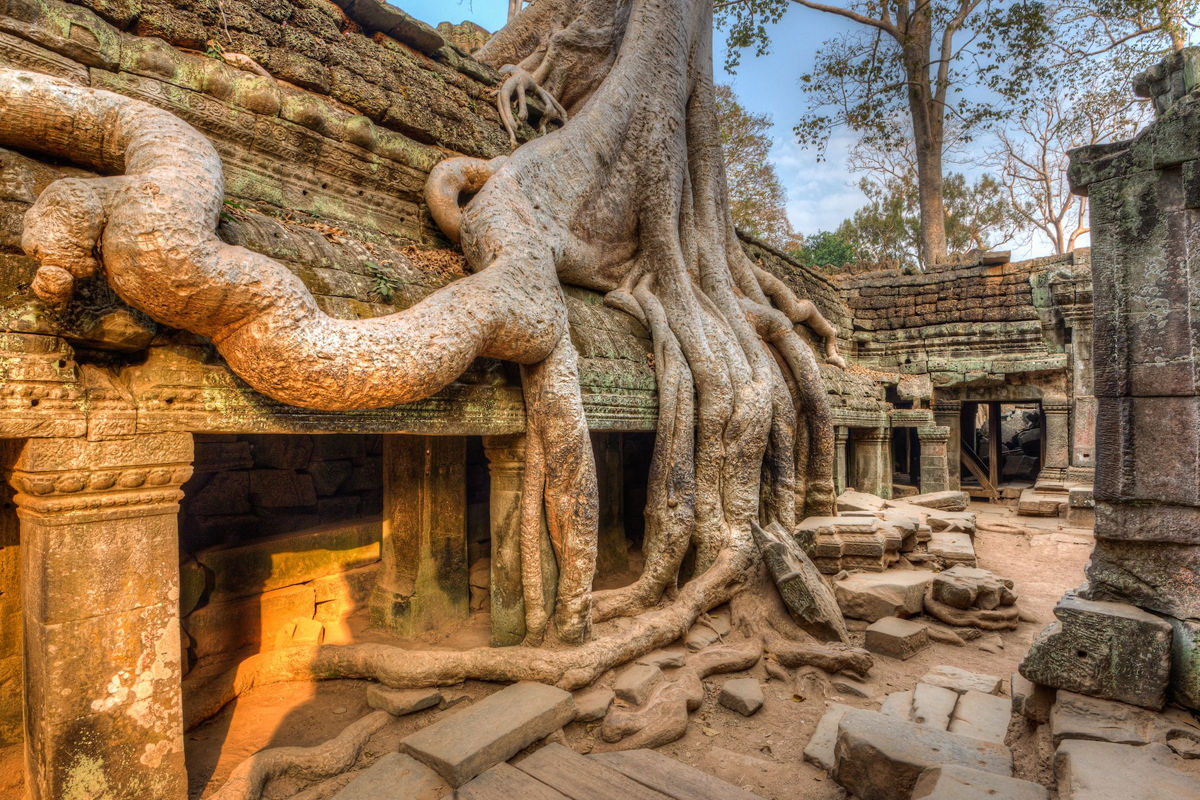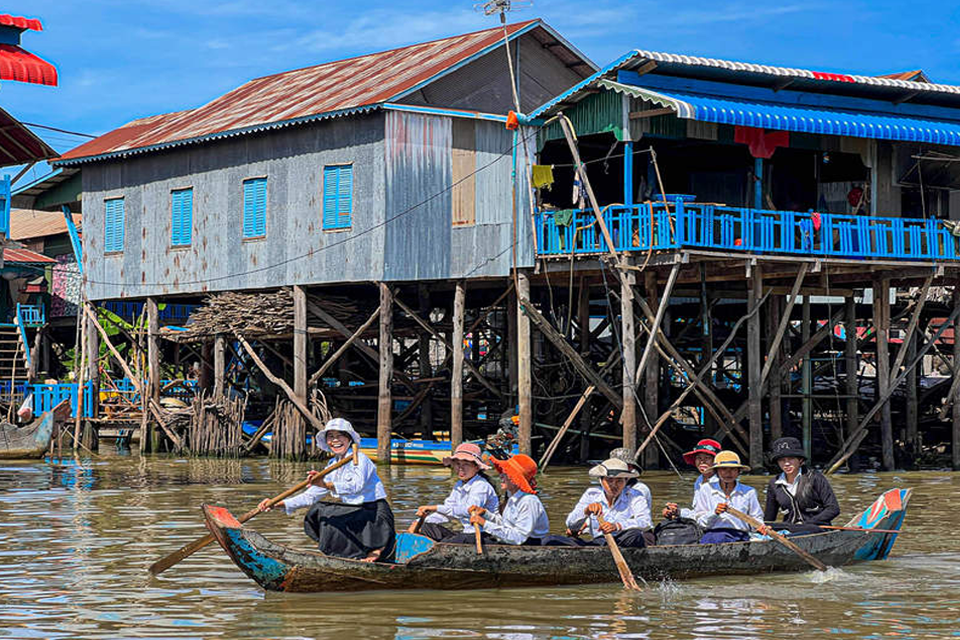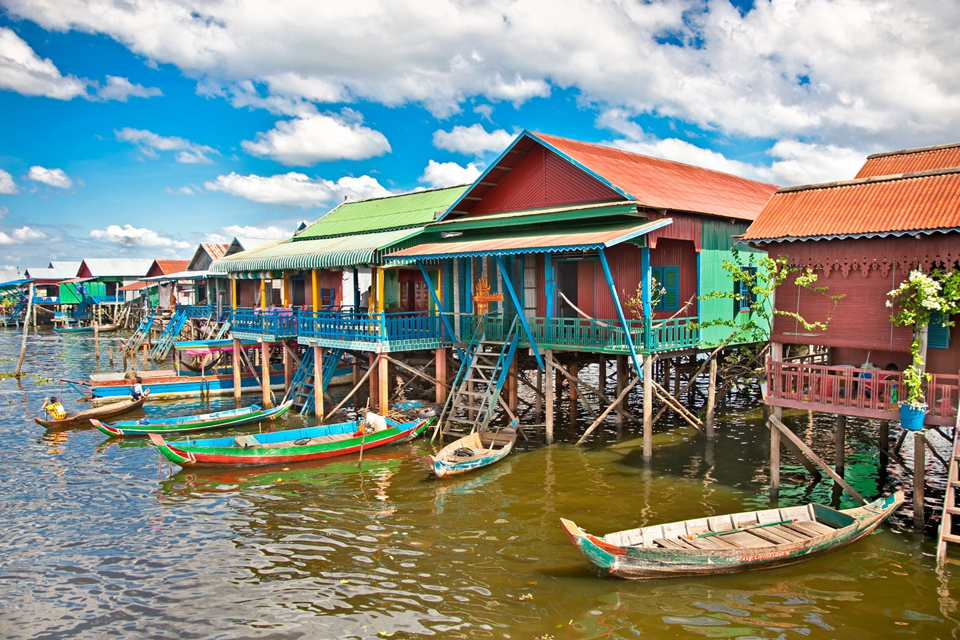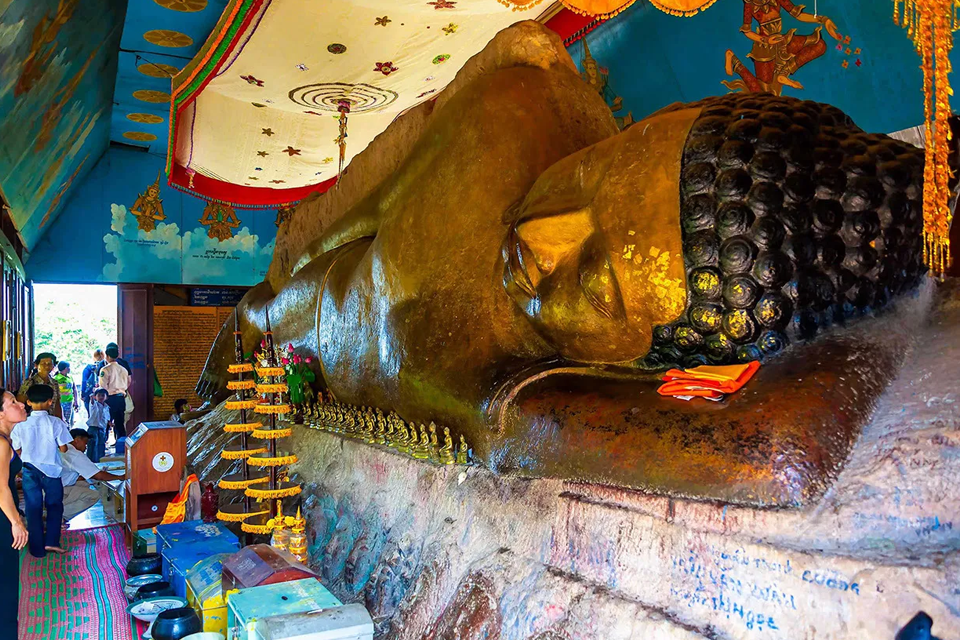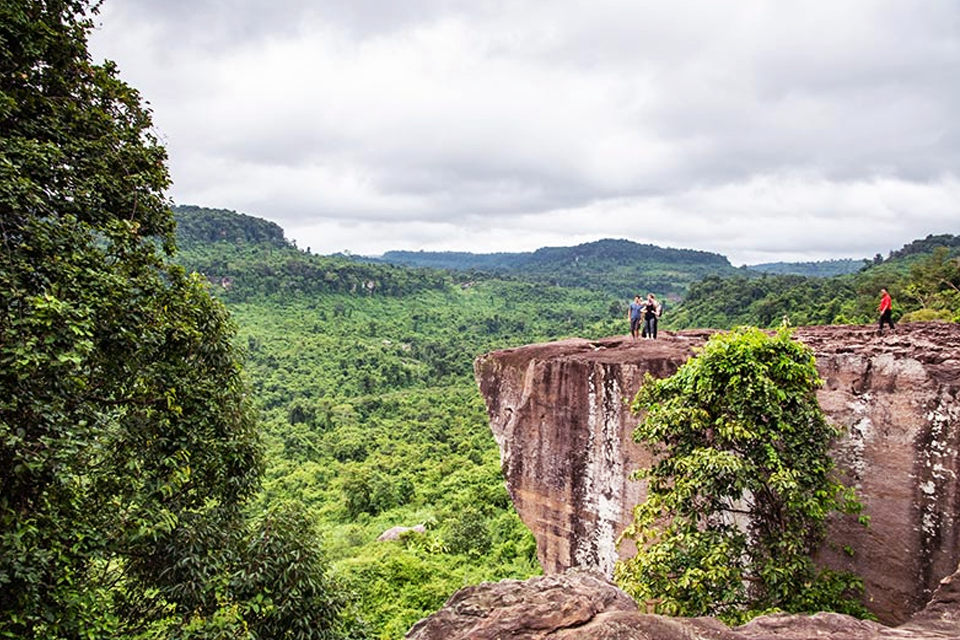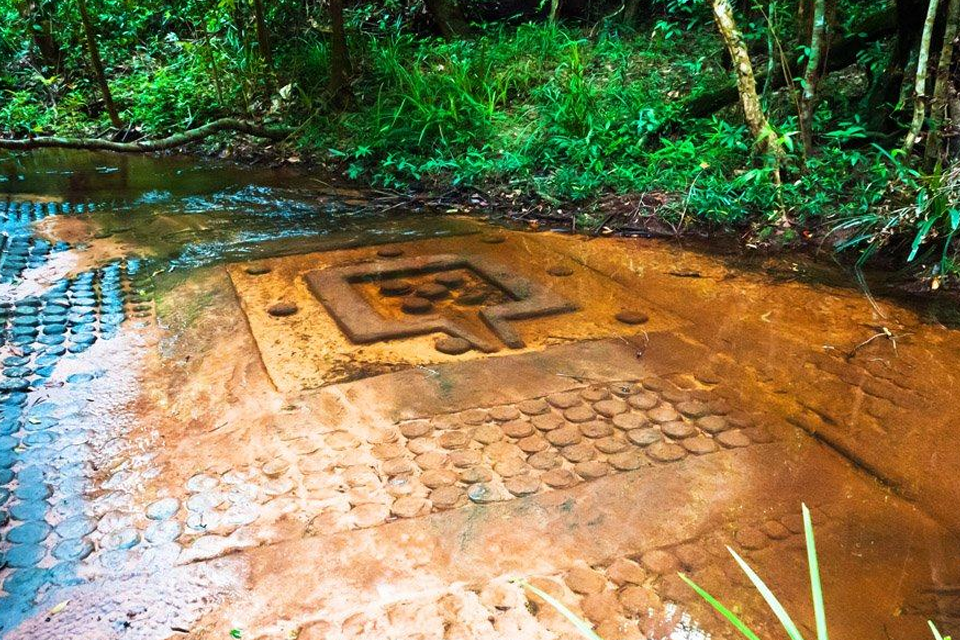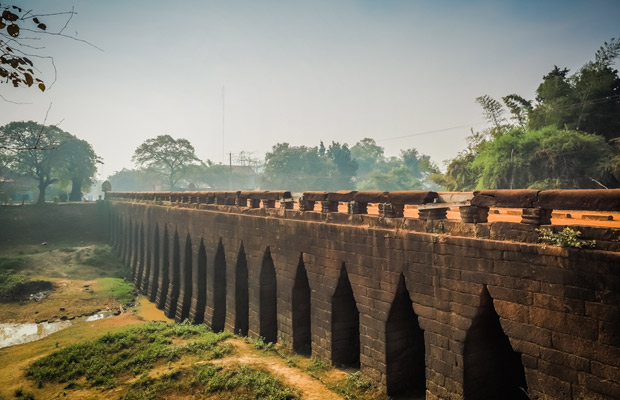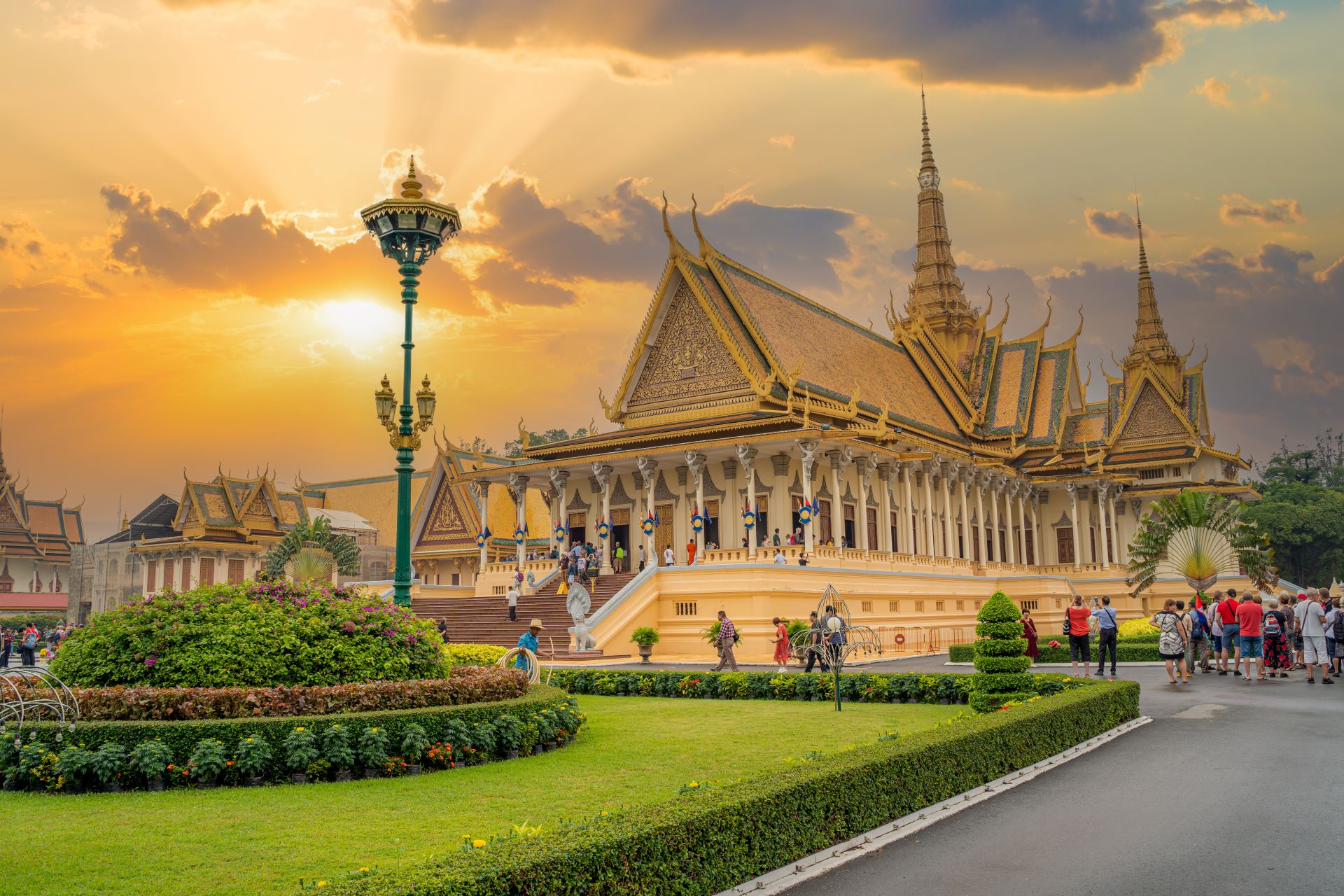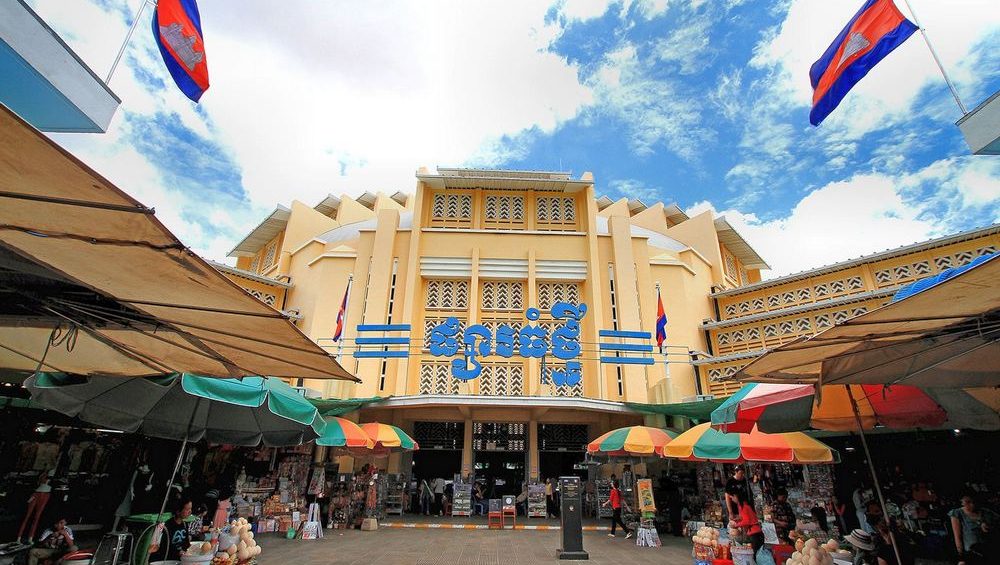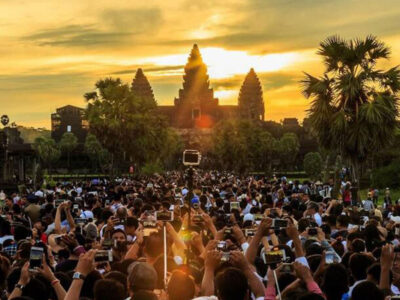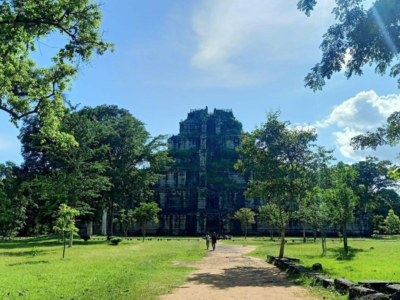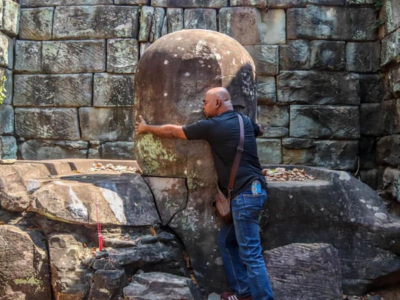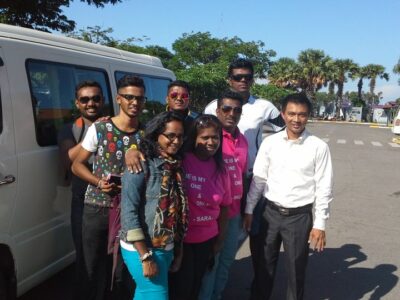7 Days Discover the Famous Sites of Siem Reap and Phnom Penh
Join this exciting long tour and discover the historic temples of Angkor Wat, credited to King Suryavarman II and Angkor Thom, credited to King Jayavarman VII. Visit the Royal Palace, Silver Pagoda, and the National Museum, and stroll through the Russian market in Phnom Penh. Admire the ancient architecture of Kampong Kdei bridge and enjoy the fun boat ride to the Kampong Phluk Floating village.
Tour option:
Tour Price
- $ 840 from 1-2 People
- $ 940 from 3-6 People
- $ 1140 from 7-10 People
Private Group
About this tour
– Pick Up and drop off at airport
– Pick Up and drop off at hotel in Siem Reap-Phnom Penh
– Duration 7 days
– Private group
– Transportation with driver
– English speaking tour guide
– Temples and Places Visited: Angkor Thom, Bayon, Ta Prohm, Angkor Wat, Kulen waterfall, 1000 Linga, Reclining Buddha, Kampong Phluk, Tonle Sap Lake, Kampong Kdei Bridge, Phnom Penh Capital City, Royal Palace, the Silver Pagoda, the National Museum and Killing Fields, Tuol Sleng Genocide Museum S21.
Highlights
– Immerse yourself in the history of the Khmer Empire
– Explore the world-famous Angkor Wat and its temples
– Enjoy the boat ride to the Kampong Phluk Floating village
– Visit the Royal Palace and Silver Pagoda in Phnom Penh
– Stroll through the Russian market
– See the largest reclining Buddha in Cambodia on the sacred mountain of Phnom Kulen
Itinerary
Day 1- Arrive in Siem Reap
Meet the tour representative, who will pick you up from Siem Reap International Airport and head to the hotel.
Check-in at the hotel and meet the tour guide to do the city tour, shop and explore the city’s old market and the nightlife until 09:00 pm.
Day 2- Explore the Main Temples of Angkor Complex
Have breakfast at 08:30 am, and you will head out with your guide to Angkor Thom, the ancient capital of the Khmer empire. Starting at the south gate, you will explore the complex and visit the central Bayon temple, the 3-tiered Hindu Baphoun temple, and the Terrace of the Elephants, which is part of the walled city.
Visit the Ta Prohm jungle temple, built by King Jayavarman VII in 1186. You may recognize the temple and the jungle that has engulfed it from the Hollywood movie Tomb Raider.
Stop for lunch at a local restaurant before visiting the iconic Angkor Wat, a UNESCO World Heritage Site.
Day 3- See the Reclining Buddha at the Phnom Kulen Mountain
Immerse yourself in the history of the Khmer Empire on a full-day tour from Siem Reap to the sacred mountain of Phnom Kulen. Upon arrival, you will go to the hilltop site to see the largest reclining Buddha in Cambodia, dedicated to the proclamation of independence by King Jayavarman II in 802 AD. Navigate the rugged roads to see the intricate fertility carvings that are a legacy of the God-Kings who ruled Cambodia in the 9th century. Have lunch at a local restaurant.
Stop at a local village on the way back to learn how sugar is produced from the sugar palm plant. For the countryside tour, proceed to the Southwest of the town to see a remote village.
Enjoy the countryside scenery, including villages, traditional houses, green rice fields, the people, their culture and the wonderful smile of the children here.
Head back to the hotel.
Day 4- Visit Tonle Sap Lake and Kompung Phluk Area
Enjoy a combined full-day tour of Tonle Sap Lake and the Kompong Phluk area, which is 30 kilometres southeast of Siem Reap.
Visit the pagoda or local market first, then go by motorized boat on a tour of the stilted buildings. See where the people have courageously adapted to some of the most unimaginable conditions, all with big smiles on their faces. Enjoy the beautiful atmosphere in this one-of-a-kind village from the comfort of the boats.
See the fish and crocodile farms, and then have lunch at the local restaurant.
Return to the town.
Day 5- Transfer to Phnom Penh via Kampong Kdei Bridge
Pick up from Siem Reap to Phnom Penh on the way to visit the Kampong Kdei Bridge, the ancient bridge of the Khmer Empire. The Kompong Kdei spans the Chi Kreng River with 86 meters long, 16 meters wide and 10 meters high above the riverbed level. The bridge is recognized as the longest corbelled stone–arch bridge in the world, with 21 corbel arches sustained by 20 pillars which all are made of laterite.
Check-in at the hotel in Phnom Penh.
Day 6- Witness the Highlights of Phnom Penh
Start the Phnom Penh day tour to visit the Royal Palace, the Silver Pagoda, the National Museum and Killing Fields.
Visit the Russian or Central markets and the Tuol Sleng Genocide Museum S21 today. This sweltering bazaar is the one market all visitors should visit at least once during a trip to Phnom Penh. It is the place to shop for souvenirs and discounted name-brand clothing. We can’t vouch for the authenticity of everything, but along with plenty of knockoffs, you will find genuine articles stitched in local factories.
Day 7- Departure
Enjoy free time until you are transferred to the airport in Phnom Penh. (One can also do a city tour and go shopping before transferring to Phnom Penh airport.)
What’s Included
– Pick up from airport to hotel in Siem Reap
– Pick up and drop off hotel in Siem Reap and Phnom Penh
– Cool drinking water during the tour
– English speaking tour guide
– Transportation with driver
– All the services mentioned in the description
What’s Excluded
– Personal expenses
– Lunch and Dinner
– Accommodation
– Tips for the guide and driver
– All entry fees and Tickets in Siem Reap and Phnom Penh
– Any service not mentioned in the description
What to bring
Comfortable shoes
Loose, lightweight, long clothing that is both respectful and cool in the hot Asian climate
Remember:
Dress standards are conservative throughout Asia, especially outside major cities.
To respect this and for your own comfort, please wear modest clothing. This means clothing that covers your shoulders and knees. The Apsara Authority, which manages the park, reserves the right to refuse entry to certain areas of the site for guests who wear clothing that is considered immodest.
No smoking, drinking alcohol, or touching the carvings is permitted in and around the temples.
Closure of site: The third level of Angkor Wat is not open during Buddhist holidays.
Know Before You Go
About:
– Angkor Wat was built in the 12th century by King Suryavarman II and is dedicated to the Hindu god Vishnu.
– Located just north of Siem Reap, the isolated Phnom Kulen Mountain range is formed of sandstone and is widely regarded as the birthplace of the ancient Khmer Empire. Phnom Kulen has now returned to government hands after the fall of the Khmer Rouge and is still fairly inaccessible because of the poor road conditions, especially in the rainy season.
– Kompong Krei Bridge was known by its original name, “Spean Preah Toeus”, which means “The Bridge of indication” in the Khmer language. This bridge is an attractive tourist destination that cannot be ignored when visiting Siem Reap – the former capital of the ancient kingdom of Angkor in Cambodia. The Kompong Kdei spans the Chi Kreng River with 86 meters long, 16 meters wide and 10 meters high above the level of the river bed. The bridge is recognized as the longest corbelled stone–arch bridge in the world, with 21 corbel arches sustained by 20 pillars, all of which are made of laterite. There are four big 9 – headed Naga statues engraved with sophisticated carvings on the end of the parapet. The figure of Naga is so sacred to Cambodian people that they worship Naga as a God, giving them love and protection for their life and their country.
– Royal Palace, Phnom Penh: Gleaming in gold, the Royal Palace is one of Phnom Penh’s most splendid architectural achievements. It is home to His Majesty Preah Bat Samdech Preah Norodom Sihanouk and Her Majesty Preah Reach Akka-Mohesey Norodom Monineath. The palace was built in 1866 by His Majesty Preah Bat Norodom, great grandfather to our current King. The Royal Palace is built on the site of the old town. This site was specially chosen by a Commission of Royal Ministers and Astrologers because it had great geographical significance in relation to the King, who was regarded as a direct descendant of the gods, whose role was to live and govern on earth under the influence of heaven.
– Silver Pagoda, Phnom Penh: Within the Royal Palace compound is the extravagant Silver Pagoda, also known as Wat Preah Keo or Temple of the Emerald Buddha. It is so named for its floor, which is covered with five tons of gleaming silver. You can sneak a peek at some of the 5000 tiles near the entrance, but most are covered to protect them.
– The National Museum, Phnom Penh: Located just north of the Royal Palace, the National Museum of Cambodia is housed in a graceful terracotta structure of traditional design (built from 1917 to 1920), with an inviting courtyard garden. The museum is home to the world’s finest collection of Khmer sculptures: a millennium’s worth and more of masterful Khmer design.
– The Killing Field: Between 1975 and 1978, about 17,000 men, women, children and infants (including nine westerners), detained and tortured at S-21 prison (now Tuol Sleng Museum), were transported to the extermination to death to avoid wasting precious bullets. The remains of 8985 people, many of whom were bound and blindfolded, were exhumed in 1980 from mass graves. 43 of the 129 communal graves here have been left untouched. Fragments of human bone and bits of cloth are scattered around the disinterred pits. Over 8000 skulls, arranged by sex, are visible behind the clear glass panels of the Memorial Stupa, which was erected in 1988. The Killing Fields of Choeung Ek are 15 km from Central Phnom Penh. To get there, take Monireth Blvd south-westward out of the city from the Dang Kor Market bus depot. The site is 8.5 km from the bridge near 271 St. A memorial ceremony is held annually at Choeung Ek on 9 May.
– Tuol Sleng Genocide Museum S21: In 1975, Tuol Svay Prey High School was taken over by Pol Pot’s security forces and turned into a prison known as Security Prison 21 (S-21); it soon became the largest centre of detention and torture in the country. S-21 has been turned into the Tuol Sleng museum, which serves as a testament to the crimes of the Khmer Rouge.
– Dress standards are conservative throughout Asia, especially outside major cities. To respect this and for your own comfort, please wear modest clothing. This means clothing that covers your shoulders and knees. Loose, lightweight, long clothing is both respectful and cool in the hot Asian climate. Comfortable shoes are a must. The Apsara Authority, which manages the park, reserves the right to refuse entry to certain areas of the site for guests who wear clothing that is considered immodest. No smoking, drinking alcohol, or touching the carvings is permitted in and around the temples.
Closure of site: The third level of Angkor Wat is not open during Buddhist holidays.
Term & Condition
– All above rate is quite in US dollar
– Deposit 50% in advance
– Please do not hesitate to contact us at the 24/7 services following email address [email protected], WhatsApp or Telegram: +855974532168 we are always on hand to assist with your inquiry.

